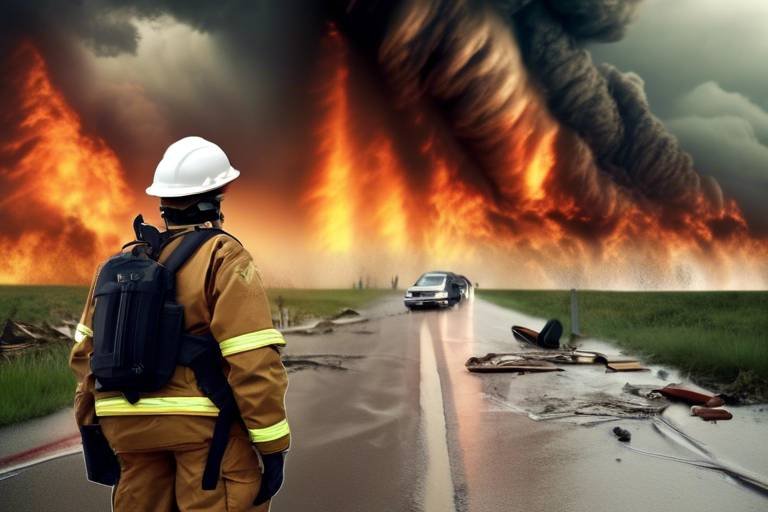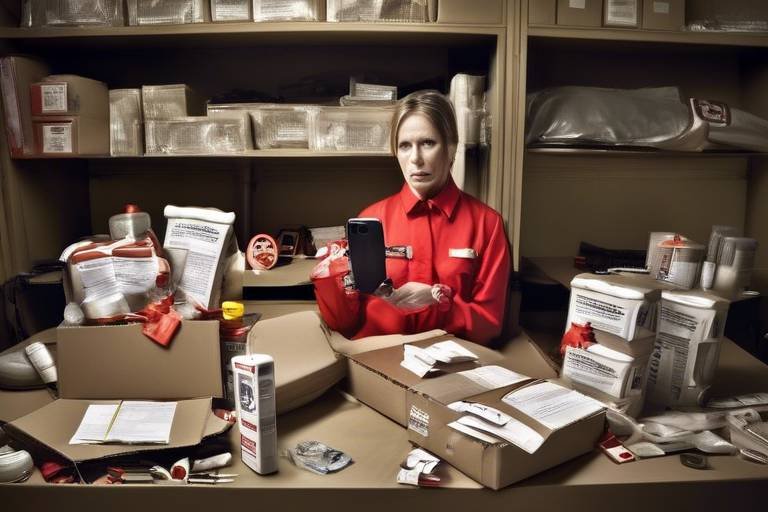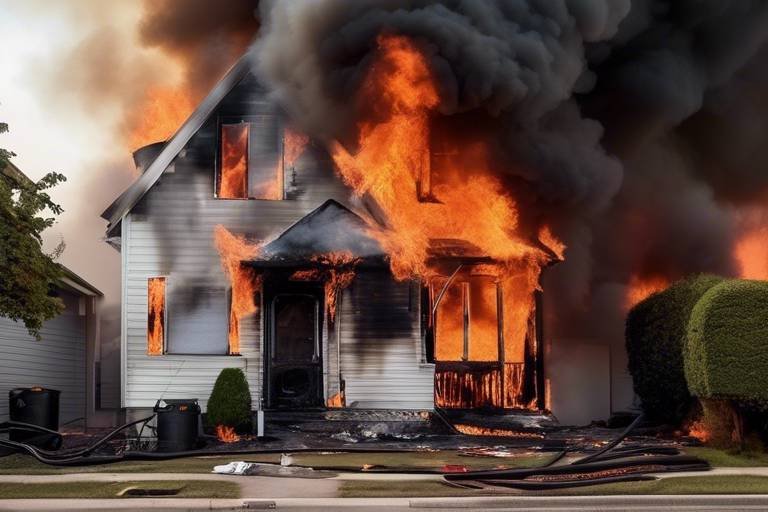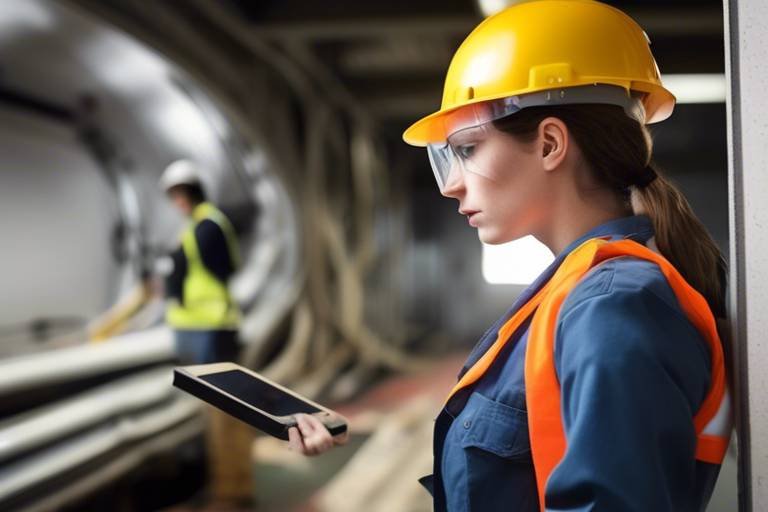Personal Safety Tips for Surviving Natural Disasters
Natural disasters can strike at any moment, often leaving us feeling vulnerable and unprepared. Whether it's a devastating hurricane, a sudden earthquake, or a raging wildfire, being equipped with the right knowledge and tools can significantly enhance your chances of survival. This article provides essential safety tips to help individuals prepare for and respond effectively to various natural disasters, ensuring personal safety and minimizing risks during such emergencies. Remember, preparation is not just about having supplies; it's about having a plan, understanding the risks, and knowing how to react when the unexpected happens.
Natural disasters can vary widely, from hurricanes to earthquakes. Understanding these types helps individuals prepare more effectively for the specific challenges each disaster presents, enhancing overall safety. For instance, hurricanes can lead to flooding and strong winds, while earthquakes can cause structural damage and landslides. By familiarizing yourself with the unique characteristics of each disaster, you can tailor your emergency plans accordingly. This knowledge acts like a compass, guiding you through the chaos and helping you make informed decisions when it matters most.
An emergency plan is crucial for ensuring your safety during a disaster. This section outlines the steps to develop a comprehensive plan that includes communication, evacuation routes, and meeting points. Start by discussing the plan with your family and ensure that everyone understands their roles. Think of it as a game plan for a sports team; every player needs to know their position and strategy. This can include identifying safe zones in your home, designating an out-of-town contact person, and mapping out routes to safety. Regularly review and practice your plan to ensure everyone is prepared and comfortable with the procedures.
Knowing safe locations in your home and community can significantly increase your chances of survival. This subsection discusses how to identify these areas based on the type of disaster. For example, during an earthquake, interior rooms away from windows and heavy furniture are ideal, while during a tornado, a basement or storm shelter is preferable. In your community, familiarize yourself with designated shelters and safe zones. Think of these safe locations as your refuge, a place where you can weather the storm, both literally and figuratively.
Implementing indoor safety measures can protect you during events like earthquakes or tornadoes. This part covers securing heavy furniture and creating safe spaces within your home. Start by anchoring bookshelves, cabinets, and other tall furniture to the walls to prevent tipping. Additionally, designate a safe spot, such as under a sturdy table, where you can take cover during an earthquake. By taking these precautions, you’re essentially fortifying your fortress, ensuring that your home remains a haven amid chaos.
Understanding outdoor safety during natural disasters is equally important. This section highlights precautions to take when outdoors, such as avoiding floodwaters and seeking shelter during storms. If you find yourself outside during a severe weather event, always seek shelter in a sturdy building. If that's not possible, avoid low-lying areas prone to flooding and stay away from trees that may fall. Think of it like navigating a minefield; one wrong step could lead to disaster, so always be aware of your surroundings and plan your escape routes.
Having the right emergency supplies on hand can make a difference in survival. This section provides a checklist of essential items to include in your emergency kit. Your kit should include:
- Water (one gallon per person per day for at least three days)
- Non-perishable food (three-day supply)
- Flashlight and extra batteries
- First aid kit
- Whistle (to signal for help)
- Dust mask (to help filter contaminated air)
- Multi-tool or knife
These supplies are your lifeline, ensuring that you can sustain yourself during the critical hours or days following a disaster. Regularly check and update your supplies, replacing any expired items to keep your kit ready for action.
Staying informed is vital during a natural disaster. This section discusses reliable sources of information and how to use them to stay updated on changing conditions. Local news stations, the National Weather Service, and emergency management agencies are excellent resources for real-time updates. Having a battery-operated radio can be a lifesaver if the power goes out. Think of these sources as your guiding light in the dark, illuminating the path to safety.
Technology can be a lifesaver in emergencies. This subsection explains how to use apps and alerts to receive real-time updates on disasters in your area. Many smartphones have built-in emergency alert systems that can notify you of impending threats. There are also numerous apps available that provide weather updates and emergency alerts. By leveraging technology, you’re essentially putting a safety net under yourself, ensuring that you’re always one step ahead of the disaster.
Effective communication is essential during disasters. This part emphasizes strategies for maintaining contact with loved ones and ensuring everyone is accounted for during emergencies. Establish a family communication plan that includes how to reach each other if separated. Texting can be more reliable than calling during emergencies due to network congestion. Think of your communication plan as a safety rope, keeping you connected even when the world feels chaotic.
Recovery after a disaster can be challenging. This section outlines essential steps to take in the aftermath, focusing on safety, health, and emotional well-being. First, check for injuries and provide first aid if necessary. Then, assess your property for damage, but do so cautiously to avoid hazards. Remember, recovery is not just about rebuilding; it’s also about healing emotionally. Seek support from friends, family, or local organizations to help navigate the recovery process.
Assessing damage after a disaster requires caution. This subsection provides tips on how to safely evaluate your property and surroundings without risking further injury. Look for hazards such as downed power lines, gas leaks, or unstable structures. Always wear protective gear, like gloves and sturdy shoes, to safeguard yourself against sharp debris. Think of this assessment as a reconnaissance mission; gather information while ensuring your safety is the top priority.
After a disaster, seeking assistance is crucial. This section covers available resources, including local organizations and government aid, to help individuals recover and rebuild. Many communities have disaster relief organizations that offer food, shelter, and financial assistance. Don’t hesitate to reach out for help; it’s a sign of strength, not weakness. Remember, recovery is a journey, and you don’t have to walk it alone.
Q: What should I include in my emergency kit?
A: Your emergency kit should include water, non-perishable food, a flashlight, batteries, a first aid kit, and important documents.
Q: How can I stay informed during a natural disaster?
A: Stay informed by following local news, using emergency apps, and listening to weather alerts.
Q: What is the best way to communicate with my family during a disaster?
A: Establish a communication plan that includes texts and designated meeting points to ensure everyone stays connected.
Q: How can I assess damage safely after a disaster?
A: Wear protective gear, look for hazards like downed power lines, and avoid entering unstable structures.
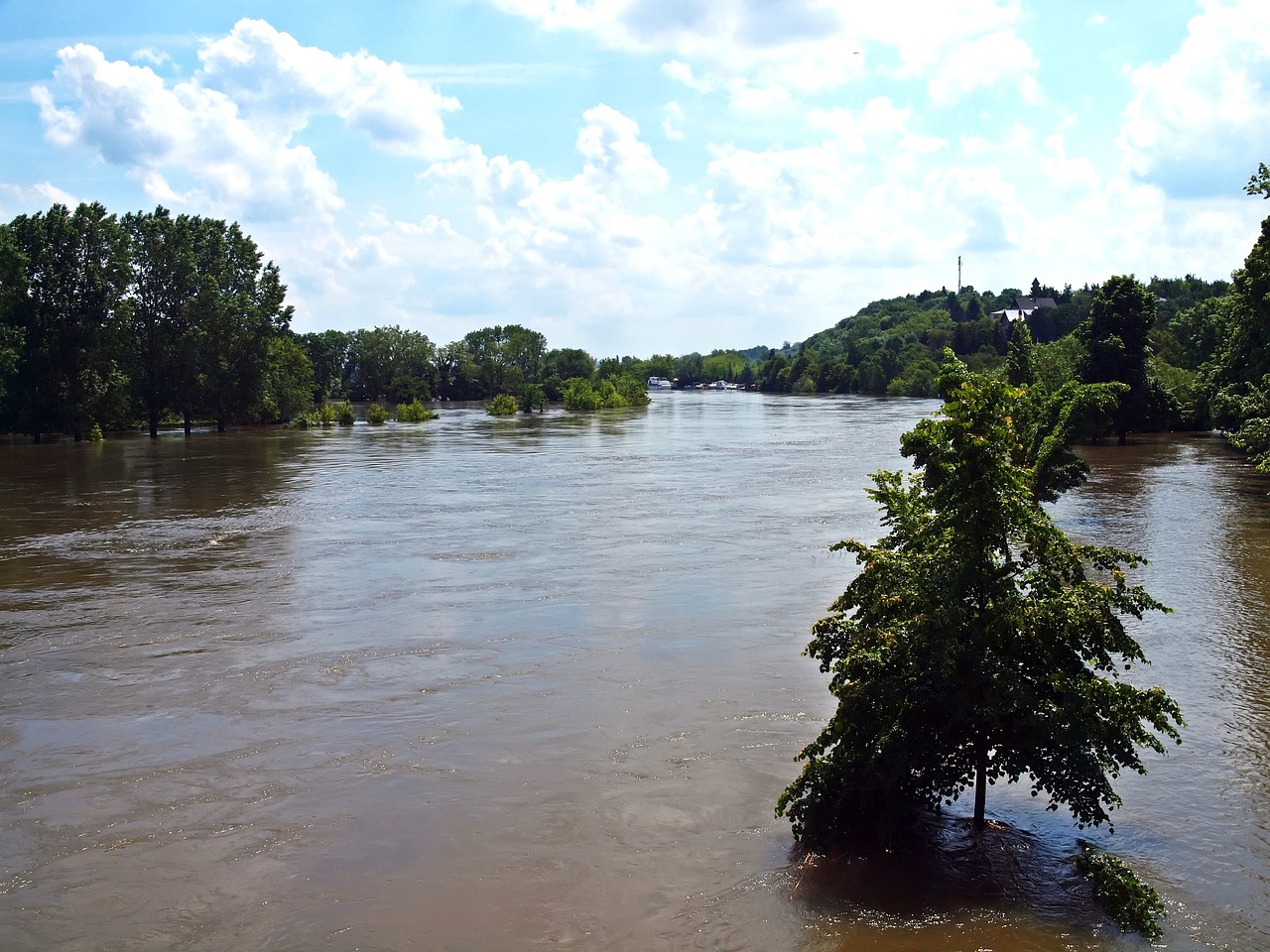
Understanding Different Types of Natural Disasters
Natural disasters can strike at any moment, often leaving us feeling vulnerable and unprepared. They come in various forms, each with its own unique challenges and dangers. Understanding the different types of natural disasters is essential for effective preparation and response. By familiarizing yourself with these events, you can significantly enhance your safety and that of your loved ones.
Let's break down some of the most common types of natural disasters you might encounter:
- Earthquakes: Sudden shaking of the ground caused by tectonic plate movements. They can happen without warning and can lead to devastating structural damage.
- Hurricanes: Powerful storms that form over warm ocean waters, characterized by strong winds and heavy rain. They can cause flooding, power outages, and property damage.
- Tornadoes: Violently rotating columns of air that extend from thunderstorms to the ground. They can destroy buildings and uproot trees in seconds.
- Floods: Overflow of water onto normally dry land, often caused by heavy rainfall, storm surges, or melting snow. Floods can lead to significant property damage and pose health risks.
- Wildfires: Uncontrolled fires that spread rapidly through vegetation, often exacerbated by dry conditions and strong winds. They can threaten homes and wildlife.
- Volcanic Eruptions: Explosive events where magma, ash, and gases escape from a volcano. They can cause lava flows, ash fallout, and pyroclastic flows, posing serious risks to nearby communities.
Each of these disasters presents specific risks that require tailored responses. For instance, while you might need to seek shelter in a basement during an earthquake, a hurricane might require you to evacuate to a designated safe area. Understanding these differences can be the key to survival.
Moreover, the impact of climate change is making some natural disasters more frequent and severe. For example, rising sea temperatures can intensify hurricanes, while prolonged droughts can lead to more frequent wildfires. This evolving landscape of natural disasters underscores the importance of being proactive in your preparedness efforts.
In summary, recognizing the types of natural disasters and their potential impacts on your life is crucial. It empowers you to take the necessary steps to protect yourself and your loved ones. Whether it’s creating an emergency kit, developing a family communication plan, or simply staying informed about local risks, being prepared can make all the difference when disaster strikes.
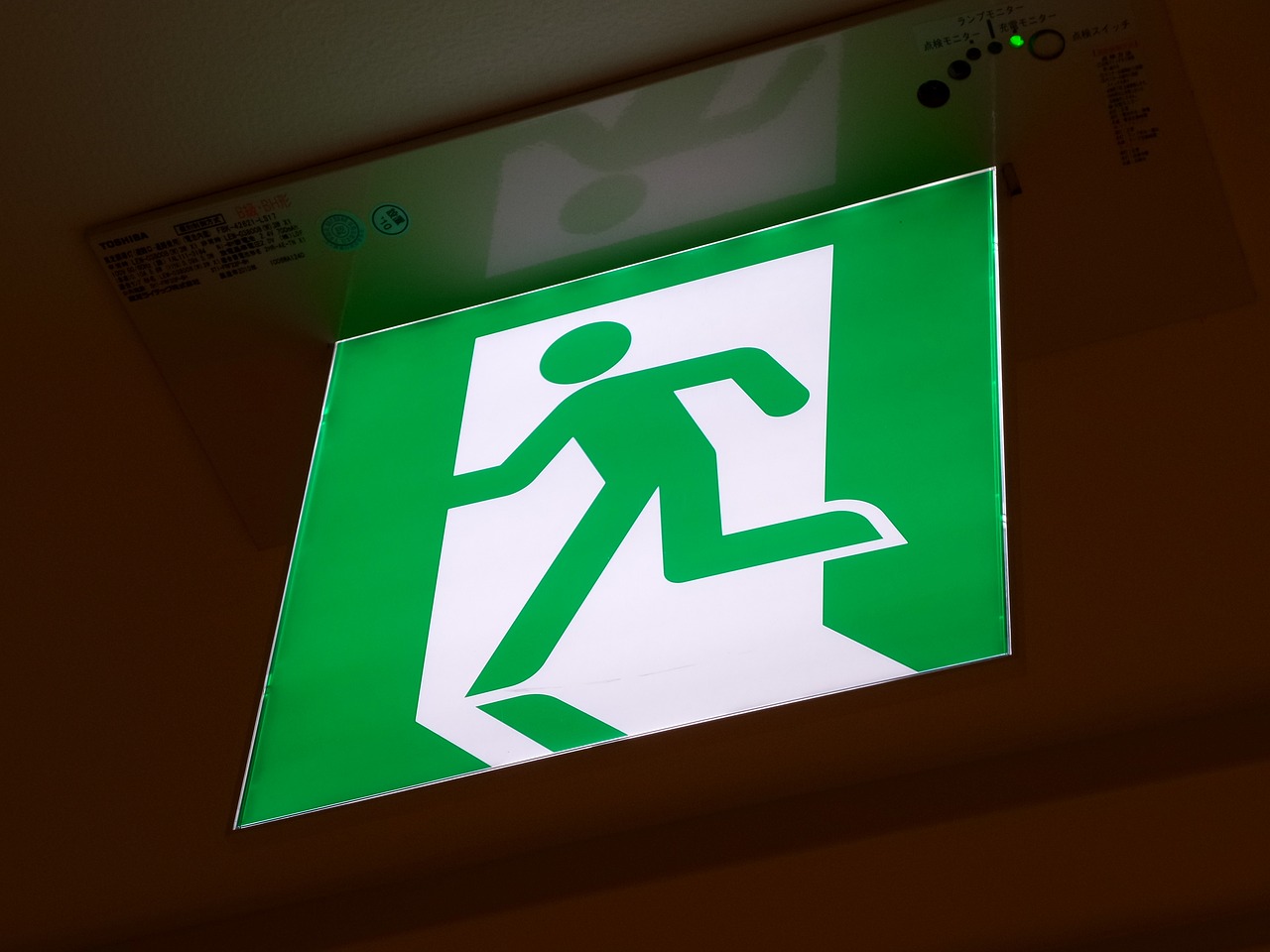
Creating an Emergency Plan
When it comes to surviving natural disasters, having a solid emergency plan can be your best friend. Think of it as your personal roadmap to safety. Just like you wouldn't embark on a road trip without a map or GPS, you shouldn't face a disaster without a plan. So, where do you start? First, gather your family and discuss the potential disasters that could impact your area. This could range from hurricanes and floods to earthquakes and wildfires. Understanding what you’re up against is crucial in crafting a plan that works for you.
Next, communication is key. Make sure everyone knows how to reach each other during a disaster. Choose a designated contact person outside your immediate area, as local lines may be overwhelmed. This way, if you get separated, you can still check in with someone who can relay information. It’s a bit like having a backup battery for your phone; it ensures you stay connected even when your primary source fails.
Another important aspect of your emergency plan is establishing clear evacuation routes. Familiarize yourself with multiple paths to safety, as roads may be blocked or unsafe during a disaster. You can even create a small map that highlights these routes and keep it in your emergency kit. Think of it as your escape hatch; knowing where to go can save precious time when every second counts.
Don’t forget to designate meeting points where family members can regroup after a disaster. This could be a neighbor's house, a local park, or any safe location nearby. Make sure everyone knows how to get there and what to do if they can’t reach it. It’s like having a family rendezvous point at a crowded amusement park; it helps prevent panic and confusion.
Lastly, it’s essential to regularly review and practice your emergency plan. Conduct drills with your family to ensure everyone knows their roles and responsibilities. This practice can help reduce anxiety and increase confidence when disaster strikes. Just like rehearsing for a play, the more you practice, the more prepared you’ll be when it’s time to take action.
In summary, creating an emergency plan involves understanding potential disasters, establishing communication protocols, identifying evacuation routes, designating meeting points, and practicing regularly. By taking these steps, you can transform what might feel like chaos into a well-orchestrated plan, ensuring that you and your loved ones are as safe as possible during a natural disaster.
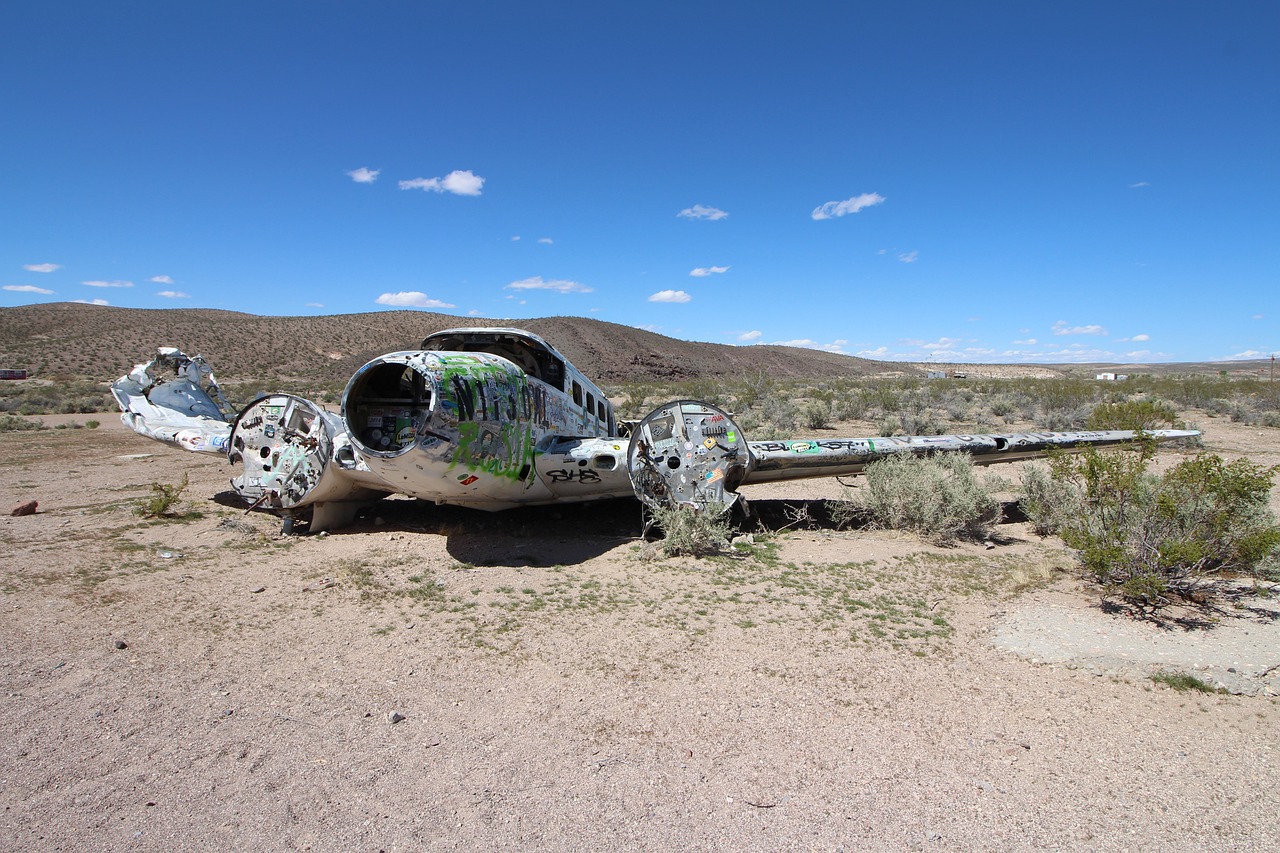
Identifying Safe Locations
When it comes to surviving a natural disaster, knowing where to go can be the difference between safety and danger. Identifying safe locations in your home and community is crucial, as these areas can significantly increase your chances of survival. Think of it like having a secret hideout; when trouble strikes, you want to know exactly where to retreat. The type of disaster you're facing will dictate what constitutes a 'safe' location. For instance, during a hurricane, you might want to head to a sturdy, interior room away from windows, whereas during an earthquake, the safest place could be under a heavy table or against an interior wall.
To effectively identify these locations, consider the following factors:
- Type of Disaster: Different disasters require different safe spots. Research the specific risks in your area to know what to prepare for.
- Structural Integrity: Choose locations that are built to withstand the forces of nature. This means avoiding places with large windows or weak structures.
- Accessibility: Ensure that these locations are easily accessible for all family members, including children and the elderly, especially during a chaotic situation.
Once you've identified potential safe locations, it’s time to practice. Just like a fire drill, run through your emergency plan with your family so everyone knows where to go and what to do when disaster strikes. This practice can help reduce panic and confusion, allowing for a smoother response when the time comes.
Additionally, don't forget to consider safe locations outside your home. Familiarize yourself with community shelters, hospitals, and other public buildings that are designed to provide refuge during disasters. Having a map of these locations can be invaluable, especially if you need to evacuate quickly. Remember, preparation is key, and knowing where to go can make all the difference in ensuring your safety and that of your loved ones.
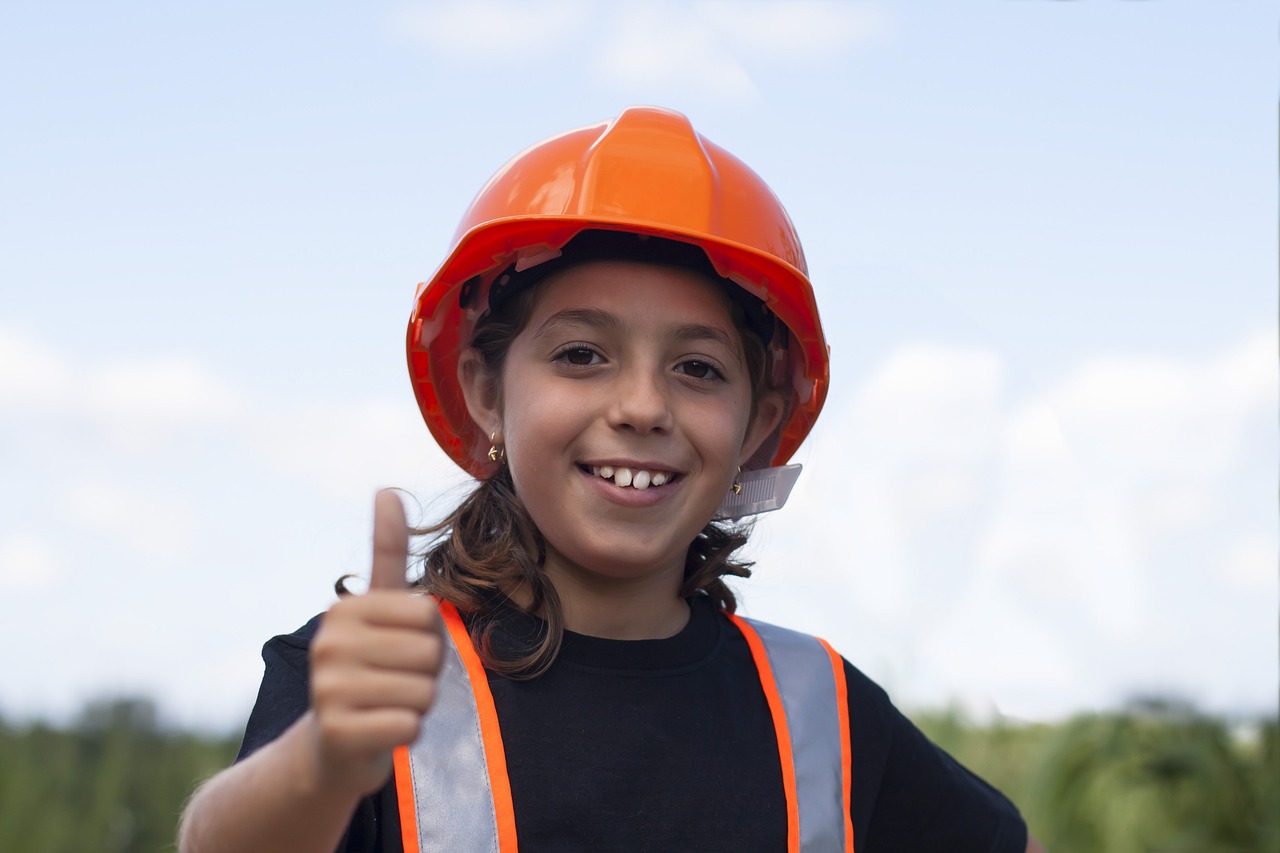
Indoor Safety Measures
When it comes to ensuring your safety during natural disasters, especially events like earthquakes or tornadoes, implementing is absolutely crucial. Think of your home as a fortress; it should be fortified against the unpredictable forces of nature. By taking proactive steps to secure your living space, you can significantly reduce the risk of injury and damage during a disaster.
First and foremost, identify the heavy furniture and appliances in your home. Items like bookcases, refrigerators, and televisions can become dangerous projectiles during an earthquake. To mitigate this risk, secure these items to the walls using brackets or straps. This simple act can prevent them from toppling over and causing serious injuries. Additionally, consider anchoring larger furniture pieces, such as dressers and cabinets, to prevent them from tipping over.
Next, create a safe space within your home. Designate a specific area, such as a basement or interior room, where you and your family can gather during a disaster. Ensure this space is away from windows and exterior walls, which are more susceptible to breaking or collapsing. You can enhance this area’s safety by keeping it clutter-free and stocked with essential supplies, such as water, food, and a flashlight. In a way, this safe space acts as your personal sanctuary during chaotic moments, providing a sense of security amidst the storm.
Moreover, it’s important to consider the layout of your home. Familiarize yourself with the best evacuation routes and ensure that they are clear of obstacles. In case of an emergency, every second counts, and having a clear path can make all the difference. Regularly practice emergency drills with your family, so everyone knows what to do and where to go when the situation arises. This practice not only prepares you physically but also instills a sense of confidence that can be invaluable in a real crisis.
Lastly, don't overlook the importance of having a well-stocked emergency kit in your safe space. This kit should include items such as:
- First aid supplies
- Non-perishable food and water
- Flashlights and batteries
- Whistle to signal for help
- Local maps
By taking these indoor safety measures, you’re not just preparing for the worst; you’re empowering yourself and your loved ones to face whatever nature throws your way with confidence and resilience. Remember, the key is to be proactive rather than reactive. So, start securing your home today and turn it into a safe haven for you and your family!
Q: What should I do if I'm indoors during an earthquake?
A: Drop to the ground, take cover under sturdy furniture, and hold on until the shaking stops. Stay away from windows and exterior walls.
Q: How can I prepare my home for a tornado?
A: Identify a safe room or basement, secure heavy furniture, and keep a supply kit ready with essentials like food, water, and a flashlight.
Q: What items are essential in an emergency kit?
A: An emergency kit should include first aid supplies, non-perishable food, water, a flashlight, batteries, and a whistle.
Q: How often should I review my emergency plan?
A: It's a good idea to review and practice your emergency plan at least once a year or whenever there are changes in your household.

Outdoor Safety Considerations
When it comes to natural disasters, being outdoors can pose unique challenges that require your utmost attention. Imagine you’re caught in a sudden storm or an earthquake strikes while you’re outside; your instincts will dictate your actions, but having a plan can make all the difference. One of the most critical things to remember is to stay aware of your surroundings. This means not only keeping an eye on the weather but also being vigilant about your environment. For instance, if you see dark clouds gathering, it’s wise to seek shelter immediately rather than wait for the storm to hit.
During events like hurricanes or severe storms, it’s essential to avoid low-lying areas that can quickly become flooded. Floodwaters can be deceptively dangerous; they can sweep you away before you even realize what's happening. If you find yourself in a flood-prone area, always have an escape route in mind. Remember, it’s better to be safe than sorry!
Another outdoor safety consideration is to avoid downed power lines. After a storm, you might be tempted to check out the damage, but if you see a power line down, keep your distance. These lines can still carry electricity and pose a serious risk of electrocution. Instead, report any downed lines to the authorities and let them handle it.
In addition, if you’re in an area prone to wildfires, keep a fire safety kit handy. This kit should include items like a fire extinguisher, a shovel, and a bucket of water. If a fire breaks out, you’ll want to be prepared to act quickly. Furthermore, it’s crucial to have a plan for evacuating your area. Know the safest routes and have a designated meeting point in case family members get separated.
Finally, if you must be outdoors during a disaster, try to stay in a designated shelter or safe zone. Many communities have established shelters specifically for use during emergencies. Familiarize yourself with these locations ahead of time so you can head there quickly if needed. Remember, your safety is paramount, and being prepared can be your best defense against the unpredictable nature of disasters.
Q: What should I do if I’m caught outside during a tornado?
A: If you’re outside and a tornado is approaching, seek shelter immediately. Look for a sturdy building; if that’s not available, find a low-lying area like a ditch and lie flat, covering your head with your arms.
Q: How can I stay safe during a flood?
A: During a flood, avoid walking or driving through floodwaters. If you find yourself in a flood-prone area, move to higher ground as soon as possible.
Q: What items should I include in my outdoor emergency kit?
A: Your outdoor emergency kit should include a flashlight, extra batteries, a whistle, non-perishable food, water, a first aid kit, and any necessary medications.
Q: Is it safe to use my phone during a storm?
A: While it’s important to stay informed, avoid using your phone during severe lightning storms unless absolutely necessary. If you’re indoors, stay away from windows and unplug devices to avoid damage from surges.
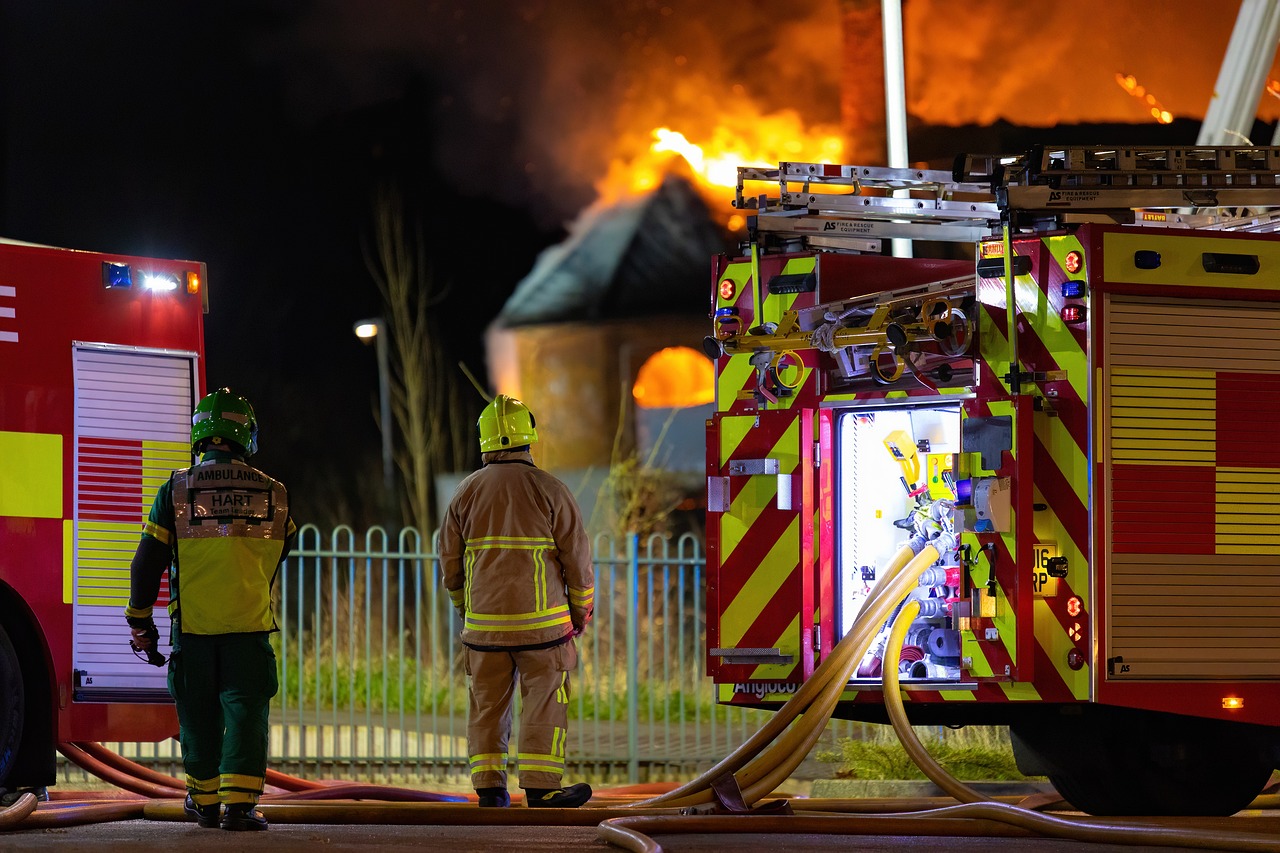
Stocking Emergency Supplies
When it comes to surviving a natural disaster, having the right supplies on hand can make all the difference between chaos and calm. Imagine this: a storm is brewing outside, the wind howls, and your heart races. In moments like these, a well-stocked emergency kit becomes your lifeline. But what exactly should you include in this kit? Well, let’s break it down.
First and foremost, you want to focus on the essentials. Think of your emergency supplies as the foundation of your safety strategy. You’ll need items that can sustain you and your family for at least 72 hours. This means food, water, and medical supplies should be at the top of your list. Here’s a quick rundown of what to gather:
- Water: Aim for at least one gallon per person per day. Don’t forget to account for pets too!
- Non-perishable Food: Stock up on canned goods, dried fruits, and energy bars. Think about meals that are easy to prepare.
- First Aid Kit: Include bandages, antiseptics, and any personal medications. It’s better to be over-prepared than underprepared.
- Flashlights and Batteries: When the power goes out, you’ll be grateful for a reliable light source.
- Multi-tool or Swiss Army Knife: This handy gadget can come in handy for various tasks.
But wait, there's more! Beyond these basics, consider adding a few additional items that could really enhance your situation during an emergency. Think about including:
- Whistle: A whistle can be a vital tool for signaling for help if you find yourself in trouble.
- Portable Phone Charger: Keeping your devices charged can be crucial for communication and information updates.
- Blankets: These can provide warmth and comfort in case you need to spend time outdoors.
- Important Documents: Keep copies of your ID, insurance policies, and any other critical paperwork in a waterproof container.
Now, let’s talk about storage. Your emergency supplies should be stored in a cool, dry place that’s easily accessible. You might consider using a sturdy backpack or a plastic bin with a lid. The goal here is to make sure that you can grab everything quickly when disaster strikes. It’s like having a secret weapon at your disposal!
Also, don’t forget to review and update your emergency kit regularly. Check expiration dates on food and medicine, and replace anything that’s been used. Think of it as a regular tune-up for your safety gear—keeping it fresh and ready to go.
Lastly, make sure that everyone in your household knows where the emergency supplies are stored. In a crisis, time is of the essence, and the last thing you want is to waste precious moments searching for your gear. A well-prepared family is a safe family!
In summary, stocking your emergency supplies is not just a task; it’s a vital preparation step that could save lives. By taking the time to gather the right items and ensuring they are easily accessible, you’re setting yourself and your loved ones up for a better chance of survival in the face of natural disasters.
Q: How often should I check my emergency supplies?
A: It's recommended to check your emergency supplies every six months. This ensures that food, medications, and other items are still usable and up to date.
Q: What should I do if I have specific dietary restrictions?
A: Customize your emergency food supplies to fit your dietary needs. Look for non-perishable items that align with your restrictions, such as gluten-free or vegan options.
Q: Is it necessary to have a first aid kit?
A: Absolutely! A first aid kit is essential for treating minor injuries and can be critical in more serious situations where medical help may not be immediately available.
Q: How do I store my emergency supplies?
A: Store your supplies in a cool, dry place in a waterproof container or a sturdy backpack. Ensure it's easily accessible to all family members.

Staying Informed During a Disaster
When disaster strikes, the world can feel like it's spinning out of control. The chaos and uncertainty can be overwhelming, but staying informed is your lifeline. Think of it as navigating a ship through stormy seas; without a compass, you risk being lost. Reliable information helps you make informed decisions that could save your life and the lives of your loved ones. So, how can you ensure you’re always in the know during a natural disaster?
First and foremost, it's essential to know where to get your information. Traditional news outlets like television and radio are great, but in today's digital age, technology plays a crucial role. Social media platforms and news apps can provide real-time updates, but you need to be careful about the sources you trust. Misinformation can spread like wildfire, so stick to reputable organizations such as the National Weather Service or local emergency management agencies.
Another vital aspect of staying informed is understanding alerts and warnings. These notifications can come in many forms, including text alerts, mobile apps, or even weather radios. Familiarize yourself with the different types of alerts, such as:
- Watch: Conditions are favorable for a disaster to occur.
- Warning: A disaster is imminent or already happening.
- Advisory: Conditions are hazardous but not life-threatening.
Incorporating technology into your disaster preparedness plan can enhance your ability to stay informed. Many apps are designed specifically for emergencies, providing alerts and updates tailored to your location. For example, the FEMA app offers real-time alerts, safety tips, and emergency kit checklists. It’s like having a personal assistant dedicated to your safety!
Moreover, don't underestimate the power of community. Local neighborhood groups often share vital information and resources during disasters. Engaging with your community not only keeps you informed but also fosters a sense of solidarity. Remember, during a crisis, we are all in this together, and sharing information can make a significant difference.
Lastly, keep in mind that staying informed is not just about receiving information; it’s also about sharing it. If you come across helpful updates or resources, pass them along to friends and family. In times of crisis, communication can be the glue that holds us together.
Q: How can I receive alerts for natural disasters in my area?
A: You can sign up for local emergency alerts through your city or county's emergency management office. Additionally, consider downloading apps like FEMA or Red Cross, which provide real-time alerts.
Q: What should I do if I receive a disaster warning?
A: Follow the instructions provided in the alert. If evacuation is recommended, do so immediately. If you are unable to evacuate, find a safe location in your home and stay tuned for further updates.
Q: How can I verify the information I receive during a disaster?
A: Cross-check information with multiple reliable sources, such as government websites, local news outlets, and emergency management agencies. Avoid sharing unverified information to prevent the spread of misinformation.

Utilizing Technology for Alerts
In our fast-paced world, technology has become an essential ally during emergencies, especially when it comes to natural disasters. Imagine being caught in a storm without any warning—that’s a scenario no one wants to face. Fortunately, leveraging technology can help you stay ahead of the game. By utilizing various apps and alert systems, you can receive real-time updates that keep you informed and safe.
First off, let’s talk about the power of mobile apps. There are numerous applications available that provide alerts for severe weather conditions, earthquakes, and other natural disasters. These apps often use GPS technology to send notifications tailored to your specific location. For instance, the National Weather Service (NWS) offers a free app that delivers timely weather alerts directly to your smartphone. This means you can receive warnings about tornadoes, hurricanes, and floods, even before they happen. It’s like having a personal weather assistant right in your pocket!
Additionally, social media platforms can serve as valuable resources during emergencies. Following local news stations or emergency management agencies on platforms like Twitter or Facebook can keep you updated on the latest developments. These channels often share crucial information about evacuation routes, shelter locations, and emergency services. Just think of social media as a digital town crier—keeping you in the loop when it matters most.
Another crucial tool is the Emergency Alert System (EAS), which broadcasts emergency messages through radio and television. This system is designed to provide immediate information about imminent threats. However, it’s important to note that not all alerts will be broadcasted on every channel, so it’s wise to have multiple sources of information at your disposal.
To further enhance your preparedness, consider setting up text alerts from local authorities. Many municipalities offer services that send emergency notifications via SMS. This is particularly useful if you’re in an area prone to disasters. Just imagine being at work or running errands and receiving a text alert about an impending tornado warning. You’d be able to act quickly and seek shelter, potentially saving your life and the lives of others.
In summary, utilizing technology for alerts during natural disasters is not just about convenience; it’s a matter of survival. The combination of mobile apps, social media updates, and emergency broadcasting systems ensures that you’re well-informed and can take timely action when disaster strikes. Make sure to explore these options and incorporate them into your emergency preparedness plan. After all, being proactive today can make all the difference tomorrow.
- What are the best apps for disaster alerts? Some popular options include the FEMA app, Weather Underground, and local emergency management apps.
- How can I ensure I receive alerts? Make sure to enable notifications on your devices and subscribe to local alert systems.
- What should I do if I receive an alert? Follow the instructions provided in the alert, and take immediate action if necessary.
- Can social media be trusted for emergency information? While social media can provide timely updates, always verify information through official sources.
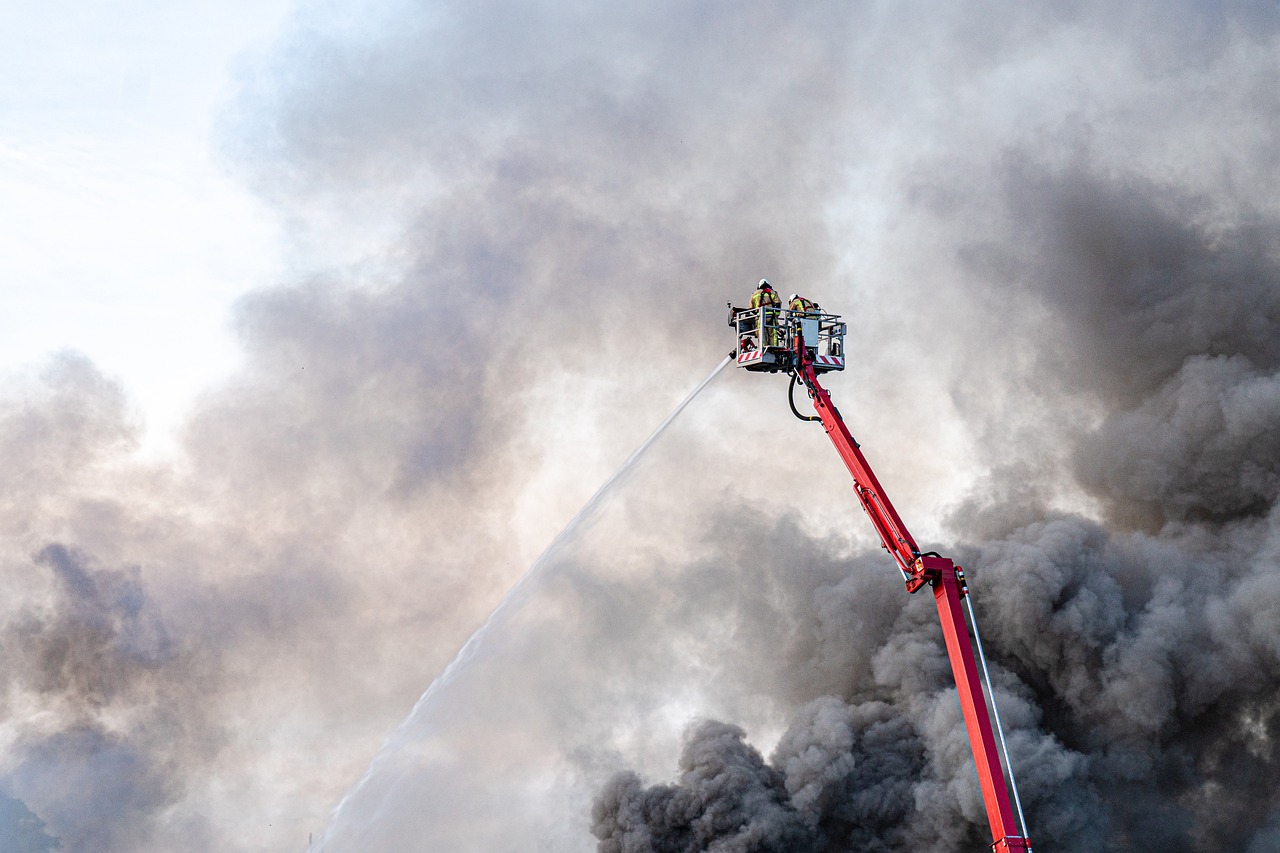
Communicating with Family and Friends
Effective communication during a natural disaster is not just important; it's essential. When chaos ensues, knowing how to reach your loved ones can provide a sense of security and calm. Imagine the panic that sets in when you can't find out if your family is safe. To avoid this, it's crucial to have a communication strategy in place before disaster strikes. Start by establishing a designated contact person outside your immediate area. This person can serve as a central point of contact for everyone to relay messages, especially when local lines are down. It’s like having a lighthouse guiding you through a stormy sea.
Next, consider the various methods of communication available. While traditional phone lines might be overwhelmed, text messages often get through even when calls fail. Encourage your family and friends to use text messages or social media updates to check in. You might be surprised how effective a simple tweet can be in letting everyone know you’re safe. Additionally, apps designed for emergency communication can be invaluable. Apps like WhatsApp, Facebook Messenger, or even dedicated emergency apps can help keep everyone connected.
Another key aspect of communication is to have a clear plan on how and when to check in with each other. Set specific times to send updates or check in, ensuring that everyone knows when to expect news. This can reduce anxiety and keep everyone informed. For example, you might decide to send a quick message every few hours to let others know your status. It’s like setting a clock in a world where time seems to stand still.
Lastly, remember that communication is a two-way street. Encourage your loved ones to share their safety status as well. This not only helps you stay informed but also fosters a sense of community and support during tough times. In the aftermath of a disaster, a simple message can remind someone they’re not alone in their struggle, and that connection can be as comforting as a warm hug.
| Question | Answer |
|---|---|
| What should I do if I can't reach my family during a disaster? | Try contacting a designated external contact person who can relay messages and updates. |
| How can I ensure my messages get through? | Use text messages or social media, as they often work better than phone calls during emergencies. |
| What apps can help with communication during a disaster? | Consider using WhatsApp, Facebook Messenger, or specialized emergency communication apps. |
| How often should I check in with my family? | Set specific times for updates, such as every few hours, to keep everyone informed and reduce anxiety. |
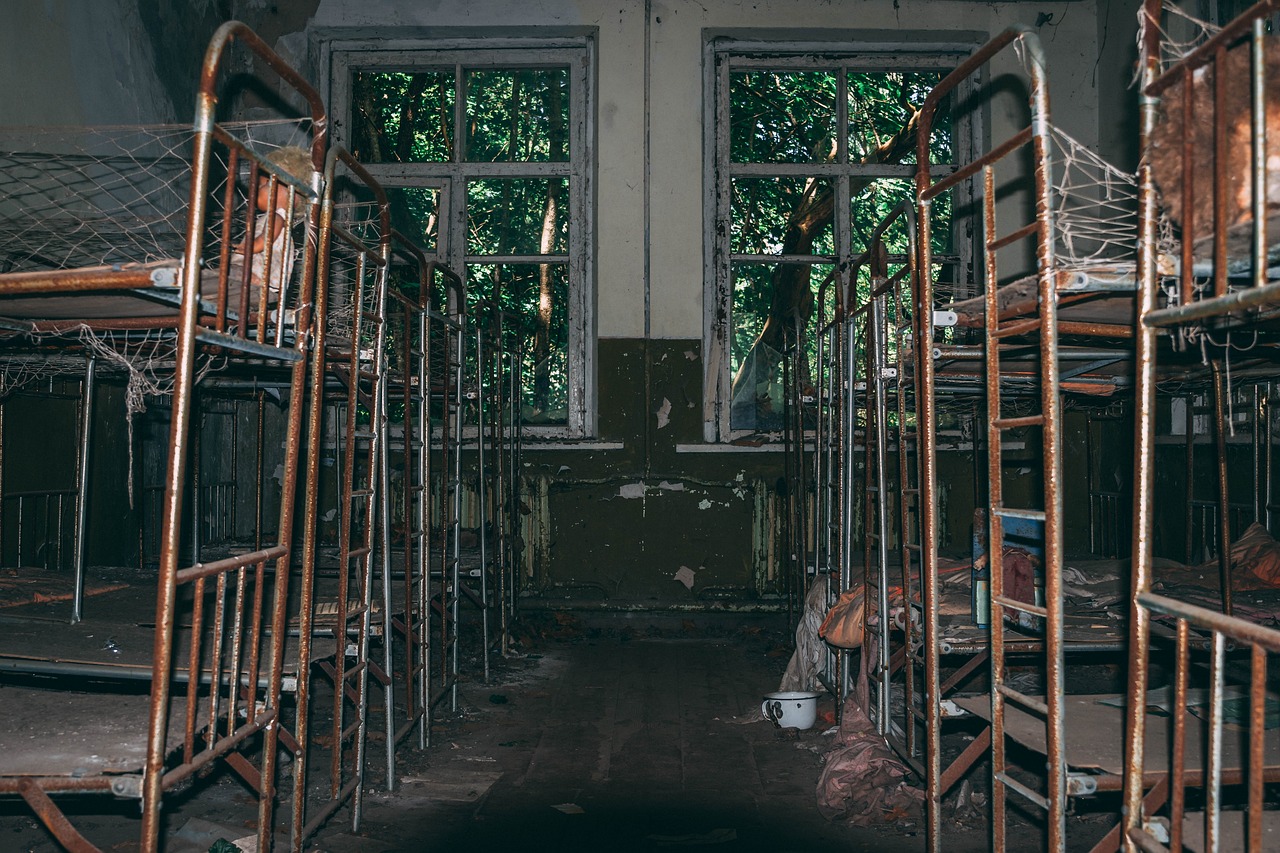
Post-Disaster Recovery Steps
Recovering from a natural disaster can feel like navigating through a maze of chaos and uncertainty. It's essential to approach the recovery process with a clear head and a solid plan. First and foremost, your safety is paramount. Before you dive into assessing damage or reaching out for help, take a moment to ensure that your immediate environment is safe. Look for hazards like downed power lines, gas leaks, or unstable structures. If you suspect any dangers, it's best to wait for professionals to arrive before re-entering your home.
Once you've established that your surroundings are safe, it's time to assess the damage. This process can be overwhelming, but breaking it down into manageable steps can make it easier. Start by documenting everything—take photos or videos of the damage for insurance claims and to help you keep track of what needs to be repaired. Make a list of damaged items, prioritizing what needs immediate attention. Remember, it's not just about your property; your emotional well-being is equally important. Take breaks when needed and don’t hesitate to lean on friends and family for support.
After assessing the damage, the next step is to seek assistance. This is where knowing your local resources can be a game changer. Many communities have organizations ready to help those affected by disasters. Reach out to local non-profits, government agencies, or even neighborhood groups that may be providing aid. Here’s a quick overview of where you might find help:
| Resource Type | Examples |
|---|---|
| Government Aid | FEMA, local emergency management offices |
| Non-Profit Organizations | Red Cross, Salvation Army |
| Community Support | Local churches, civic groups |
In the aftermath of a disaster, it's also crucial to take care of your health. This can include both physical and mental health considerations. If you were injured during the disaster, seek medical attention as soon as possible. Additionally, be aware of the psychological toll that disasters can take. Feelings of anxiety, stress, or even depression are common. Don’t shy away from seeking professional help if you find yourself struggling to cope. Many organizations offer counseling services specifically for disaster survivors.
Lastly, while it might seem daunting, begin planning for the future. This could mean making repairs to your home or, if necessary, finding a new place to live. Consider what you’ve learned from this experience and how you can prepare better for the next time. Building a more resilient life post-disaster can be incredibly empowering. Take small steps towards recovery, and remember, it's okay to ask for help along the way.
- What should I do first after a disaster? Ensure your immediate safety and check for hazards before assessing damage.
- How can I find local resources for assistance? Reach out to local non-profits, government agencies, and community support groups.
- What should I include in my damage documentation? Take photos, videos, and make a list of all damaged items for insurance purposes.
- How can I take care of my mental health after a disaster? Seek support from friends, family, or professional counseling services if needed.
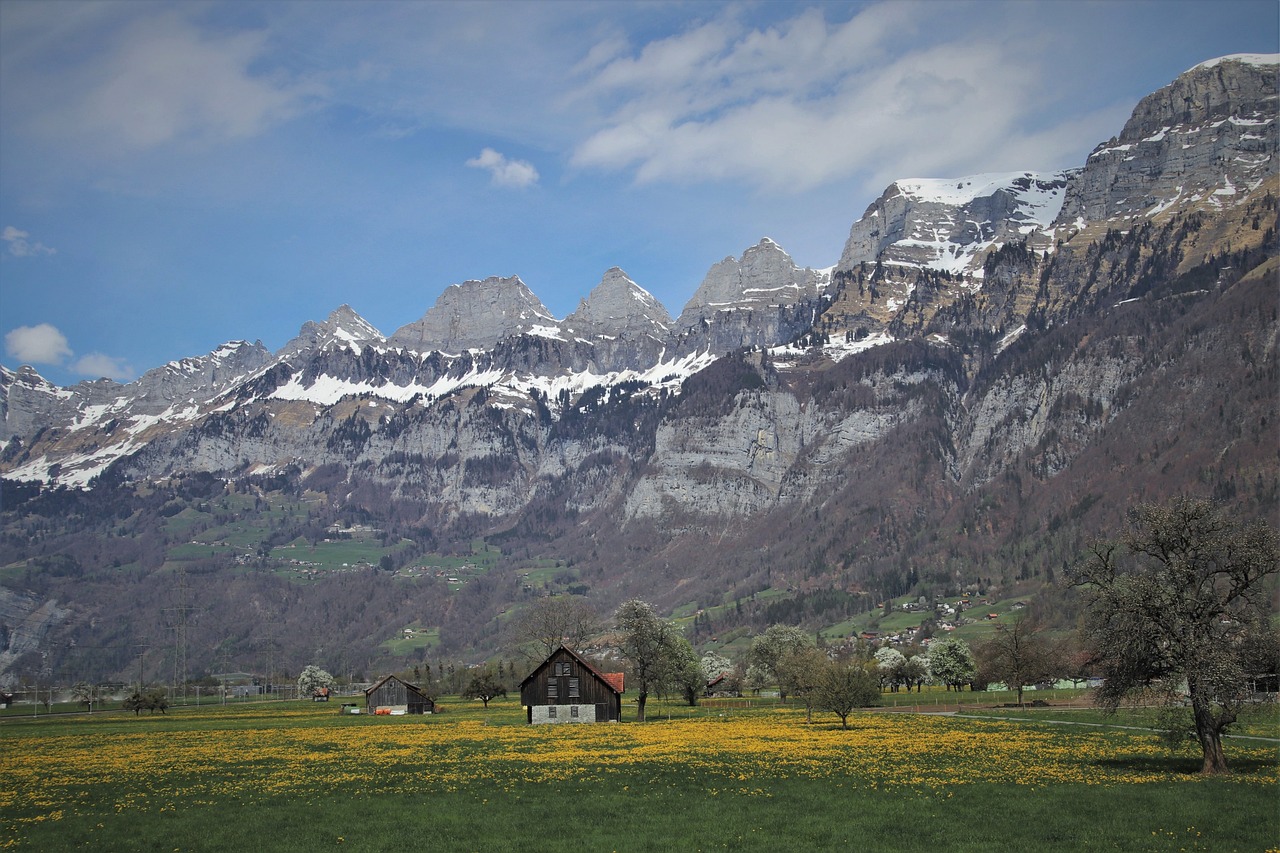
Assessing Damage Safely
After a natural disaster strikes, the aftermath can be overwhelming. It’s like standing in the middle of a storm, trying to find your footing amid chaos. The first instinct might be to rush out and inspect the damage, but patience and caution are your best allies in this situation. Before you step outside, take a moment to gather your thoughts and assess the safety of your surroundings. Remember, the ground may be unstable, and there could be hazards lurking in the debris.
Start by checking for any immediate dangers within your home. Look for signs of structural damage, such as cracks in the walls or ceilings that could indicate a risk of collapse. If you notice anything concerning, it’s essential to stay away from those areas and prioritize your safety over curiosity. Additionally, be on the lookout for gas leaks, which can be deadly. If you smell gas, do not light any matches or turn on electrical switches; instead, evacuate immediately and contact the authorities.
Once you’ve ensured your immediate environment is safe, you can begin to assess the damage more thoroughly. Here are a few steps to guide you:
- Wear Protective Gear: Before stepping outside, equip yourself with sturdy shoes, gloves, and a mask to protect against dust and debris.
- Document the Damage: Use your phone or camera to take photos of the damage for insurance purposes. This documentation can be invaluable when filing claims.
- Check on Neighbors: If it’s safe to do so, check on your neighbors, especially the elderly or those with disabilities. They might need assistance, and it’s a great way to foster community support.
When assessing your property, consider creating a simple table to keep track of the damages and repairs needed. This can help you prioritize what needs to be addressed first:
| Area of Damage | Type of Damage | Immediate Action Required |
|---|---|---|
| Roof | Missing shingles, leaks | Contact a roofing contractor |
| Basement | Flooding, structural cracks | Remove water, consult a structural engineer |
| Yard | Fallen trees, debris | Clear debris, assess tree stability |
Once you have documented the damage, it’s time to reach out for help. Local authorities, emergency services, and community organizations can provide assistance and resources to aid in recovery. Remember, you are not alone in this process. Many people are willing to lend a hand, whether it’s through volunteering or providing supplies.
In summary, assessing damage after a disaster is a critical step that requires a calm and cautious approach. By prioritizing safety, documenting the damage, and seeking help, you can navigate the recovery process more effectively. Think of it as piecing together a puzzle; each step you take brings you closer to restoring your home and life. Stay safe, stay informed, and remember that recovery is a journey, not a race.
Q1: What should I do first after a natural disaster?
A1: Ensure your immediate safety by checking for hazards in your home, such as gas leaks or structural damage. Only proceed once you confirm it’s safe.
Q2: How can I safely document damage for insurance claims?
A2: Use your phone or a camera to take clear photos of all damage, noting details like dates and locations. Keep these records organized for your insurance provider.
Q3: What resources are available for disaster recovery?
A3: Local government agencies, non-profit organizations, and community groups often provide assistance, including shelters, food, and financial aid.
Q4: How can I help my neighbors after a disaster?
A4: Check on them to see if they need assistance, share resources, and coordinate efforts to clean up or repair damages together.

Seeking Assistance and Resources
After a natural disaster strikes, the road to recovery can feel overwhelming. However, knowing where to seek assistance and the resources available can make a significant difference in your journey towards rebuilding your life. First and foremost, it's essential to tap into local organizations that specialize in disaster relief. These organizations often have the infrastructure in place to provide immediate support, whether it’s food, shelter, or medical assistance. For instance, the Red Cross is renowned for its rapid response in emergencies, offering everything from temporary housing to emotional support for those affected.
Additionally, government agencies play a critical role in disaster recovery. Programs such as FEMA (Federal Emergency Management Agency) in the United States offer various forms of assistance, including financial aid for home repairs and temporary housing. It's important to stay informed about what resources are available and how to access them. This can be done by checking official government websites or local news outlets for updates and guidelines. Remember, the sooner you reach out for help, the quicker you can start the recovery process.
In your quest for assistance, don't overlook community resources. Local churches, non-profits, and volunteer groups often mobilize quickly after a disaster, providing essential services and support. These organizations are usually comprised of community members who understand the specific needs of the area and can offer tailored assistance. They may also have connections with other resources, helping you navigate the complex landscape of recovery.
Here’s a quick overview of some resources you might consider:
- Local Disaster Relief Organizations: These can provide immediate help with food, shelter, and clothing.
- Government Assistance Programs: Look into federal and state programs that offer financial aid and recovery resources.
- Community Support Groups: Engage with local community centers or churches that may offer emotional support and practical help.
Finally, don’t hesitate to lean on your network of friends and family. They can be a source of emotional support and may have resources or connections that can help you during this challenging time. Remember, recovery is not just about physical rebuilding; it’s also about emotional healing. Talking to someone who understands your situation can provide comfort and guidance.
As you navigate the aftermath of a disaster, keep in mind that seeking assistance is a sign of strength, not weakness. It’s a crucial step towards reclaiming your life and moving forward. By utilizing available resources and leaning on your community, you can find the support you need to rebuild and recover.
Q: What should I do immediately after a disaster?
A: First, ensure your safety and the safety of those around you. Then, assess your immediate needs for food, water, and shelter. Reach out to local disaster relief organizations for assistance.
Q: How can I find local resources for disaster recovery?
A: You can find local resources by checking online, contacting local government offices, or visiting community centers. Additionally, organizations like the Red Cross and FEMA can provide valuable information.
Q: Is it important to document damage after a disaster?
A: Yes, documenting damage is crucial for insurance claims and seeking government assistance. Take photos and keep a record of all damaged property.
Q: Can I receive financial assistance for home repairs?
A: Yes, many government programs offer financial assistance for home repairs after a disaster. Check with FEMA or your local government for specific programs available in your area.
Frequently Asked Questions
- What should I do to prepare for a natural disaster?
Preparing for a natural disaster involves creating an emergency plan, stocking up on essential supplies, and understanding the specific risks in your area. Make sure to identify safe locations in your home and community, and establish communication strategies with family and friends.
- How can I create an effective emergency plan?
An effective emergency plan should include designated meeting points, evacuation routes, and a communication strategy. Involve all family members in the planning process, so everyone knows their role and what to do in case of an emergency.
- What are some essential items to include in my emergency kit?
Your emergency kit should contain items like water, non-perishable food, a flashlight, batteries, a first aid kit, medications, and important documents. Don't forget to include items for pets if you have them!
- How can I stay informed during a natural disaster?
Staying informed is crucial during a disaster. Use reliable sources like weather apps, local news stations, and emergency alert systems to get real-time updates about the situation in your area.
- What should I do immediately after a disaster?
After a disaster, prioritize your safety by assessing the damage cautiously. Check for injuries and ensure that your surroundings are safe before seeking assistance from local organizations or government resources.
- How can technology help during a natural disaster?
Technology can be a lifesaver! Use apps and alerts to receive updates and warnings about disasters. Social media can also be a great way to stay connected with loved ones and share information quickly.
- What are some indoor safety measures I can take?
To enhance indoor safety, secure heavy furniture, create safe spaces, and identify areas in your home that can provide protection during events like earthquakes or tornadoes. This preparation can significantly increase your chances of staying safe.
- What outdoor precautions should I consider during a disaster?
When outdoors, avoid floodwaters, seek shelter during storms, and stay away from downed power lines. Being aware of your surroundings and knowing where to find safety can make a big difference.

